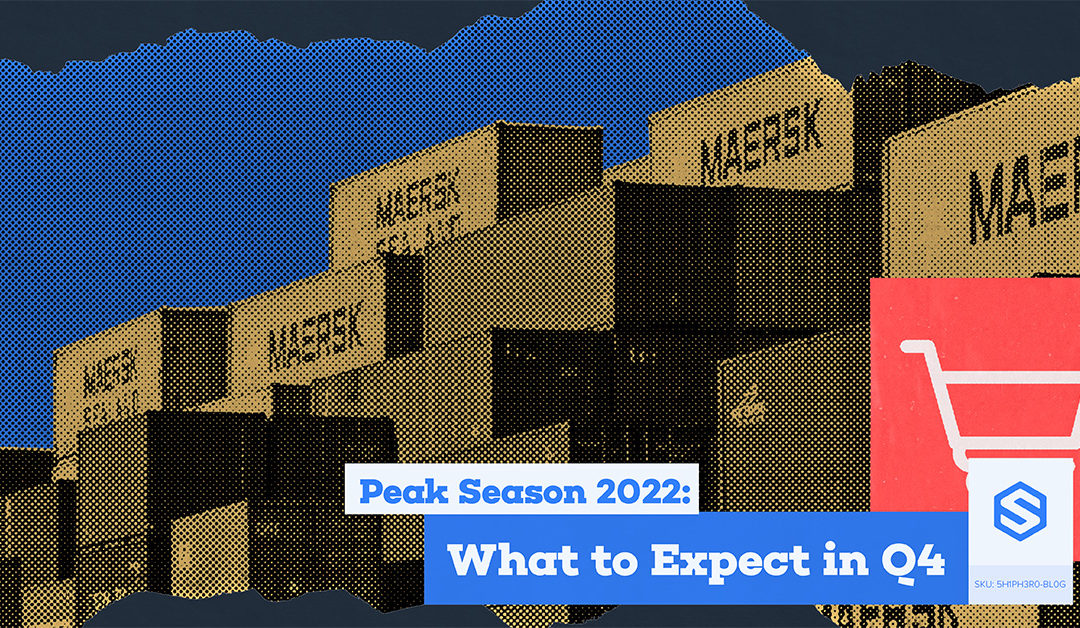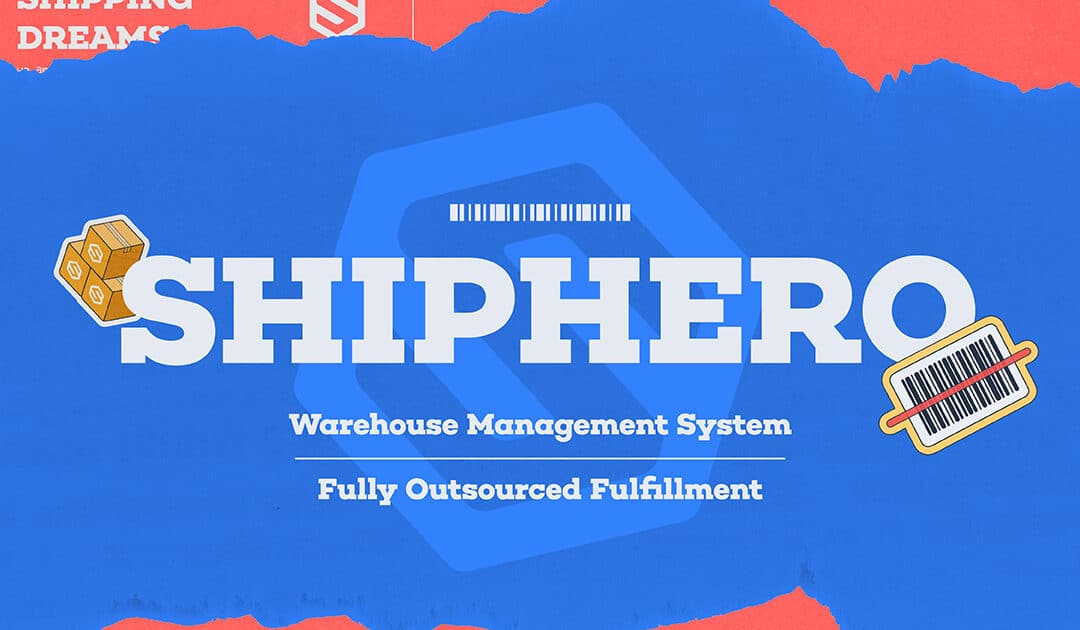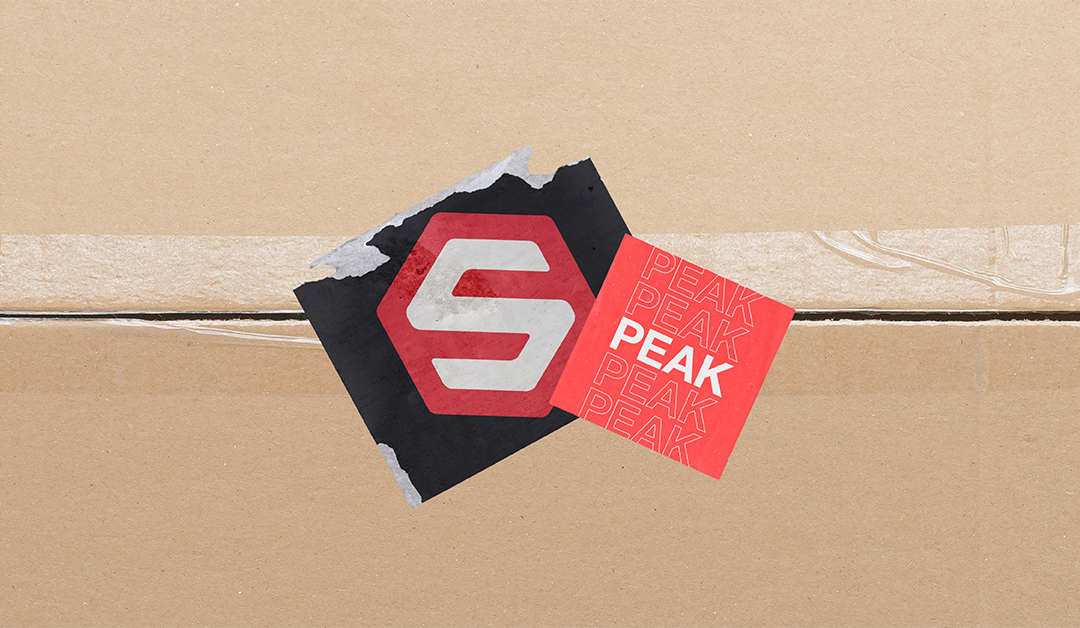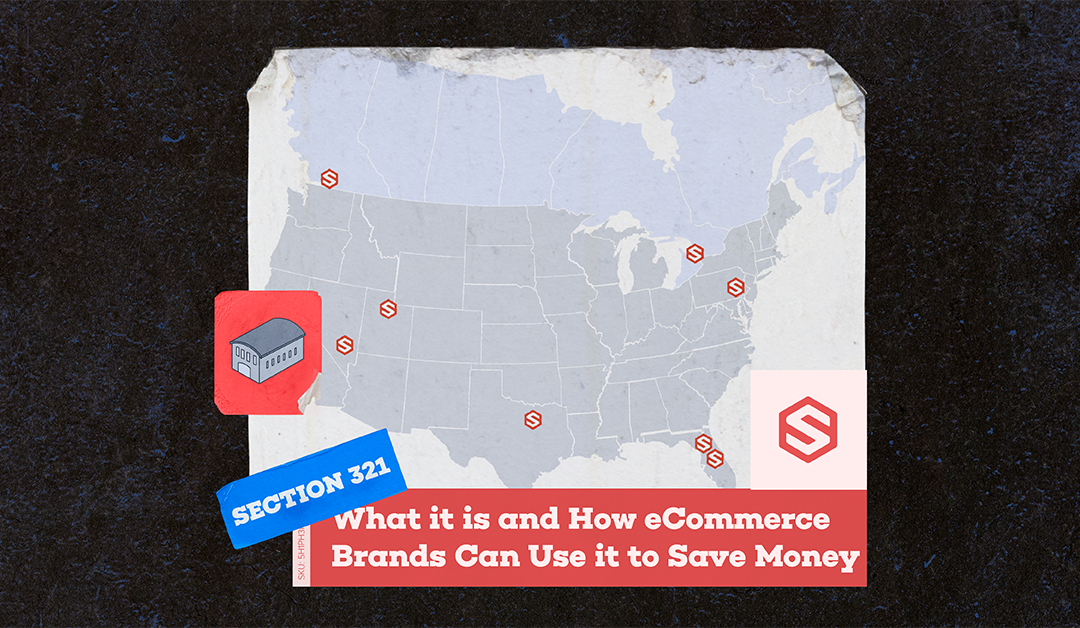
Aug 26, 2022 | Blog
Whether we like it or not, Peak Season has returned. While 2022 has proven to be a bit more predictable than 2021, the fact remains that some of the changes we saw as a result of COVID-19 and its impact on the global economy are here to stay.
To prepare you and your teams for Peak Season 2022, we’ve assembled some facts regarding what happened last year, what we can expect to happen this year and how some of the lingering effects of the pandemic continue to impact shipping and consumer sentiment this holiday season.
What We Saw During Q4 2021
The last few months of 2021 were not quite as dire for eCommerce as people predicted. In fact, retail sales grew.
During November and December 2021, retail sales grew by 14.1% for a total of $886.7 billion in sales. And in the last two weeks of 2021, sales increased by 23%. By contrast, retail sales during the last two weeks of 2020 only grew by 11%.
What Does This Tell Us?
Even in the face of economic uncertainty and supply chain delays, people still shopped in Q4. The end of the year surge could account for folks finding alternative items if the ones they truly wanted were unavailable in time for the holidays. The growth earlier in the season could account for people getting more shopping done early to avoid shipping delays (we’ll talk more about that in a second).
While supply chain disruptions most definitely impacted consumers more in 2021 than 2020, it didn’t gravely impact their holiday spending. The growth in sales for the end of 2021 proves that people were still willing and able to spend.
What We Can Expect to See During Q4 2022
This year, the biggest ongoing concern for most consumers is inflation. It is true that the cost of goods has risen and these increased costs have impacted everyone. With higher costs for necessities like gas and food, there is a chance that discretionary spending will decline as people keep their wallets closed.
However, the overriding belief is that the 2022 holiday season will offer growth in retail sales. It is also predicted that shoppers will continue a trend that started 2 years ago and shop early to avoid shipping delays or products being sold out. In fact, 57% of consumers stated they aren’t going to wait until Black Friday to start their shopping.
What Does This Tell Us?
Primarily this means that the retailers that offer deals and discounts as early as October might see an influx of dollars. In 2021, Black Friday pricing started early and many shoppers capitalized on the savings. We can expect more of the same this year.
We can also expect that m-commerce (or mobile-first commerce) will continue to grow at a rate of about 15%, and with it, Buy Online, Pickup in Store (BOPIS) and Buy Online, Pickup at Curbside (BOPAC). Services like BOPIS rose sharply during the pandemic and the impacts will be long-lasting. Seventy percent of consumers surveyed said that BOPIS has improved their overall retail experience.
Shipping Delays & Strategies
Shipping is still an issue and it’s not changing. Many industry experts believe that a lot of the shipping challenges that were part of the pandemic are here to stay. Brands have been trying to find strategies to overcome shipping delays and rising costs.
Despite the hope that shipping delays between China and the United States would lessen as we distance ourselves from 2020, in fact, those delays have quadrupled since March of this year. These delays will continue to challenge retailers to keep warehouse and store shelves full.
And while the world is aware of the challenges faced by businesses and carriers to get packages delivered quickly, 70% of respondents in a recent survey published by UPS, stated that free shipping at checkout is the most important factor when making an online purchase. And 54% said that an estimated or guaranteed delivery date is the most important.
What Does This Tell Us?
Primarily this tells us that people’s willingness to forgive delays or rising costs due to the pandemic has waned. Also, when faced with rising costs in other sectors, consumers will look for somewhere to find a deal. Free shipping is still considered one of the best “deals” in the marketplace, regardless of its toll on retailer bottom lines and transportation carrier bandwidths.
Load Balancing On the Rise
Load balancing your warehouse has proven to save up to 25% on shipping costs. That savings alone is worth the effort; however there’s also evidence that load balancing can reduce your total costs by up to 13%.
This tactic has been growing over the past few years as more strategic inventory placement has proven to result in cost savings. Getting the right products closer to the customers that will order them is just one way to cut down on shipping costs, and also a way to improve customer satisfaction with quicker delivery times.
Load balancing is not without its challenges though. It does take coordination and a warehouse management software system that can support moving your products across different warehouse locations.
Rebound with Better Returns Management
Returns are again taking center stage as online purchases were returned last year at a rate of 17.8% which was an increase over the rate at the end of 2020. Research has also shown that return rates for online purchases in general are twice as high as returns of goods purchased in-store.
Additionally, more than 80% of shoppers have stated that a bad returns experience has resulted in them abandoning the brand for good.
What This Tells Us?
Buttoning up your returns process and making it easy on the customer and your warehouse team is key to rebounding from revenue lost to returns during this time of year. Research has shown that 30% of all returns can also be converted into a new purchase, so there is a chance to recoup some of those dollars.
Working with partners that specifically manage returns (Loop Returns and Returnly both have direct integrations with ShipHero) can make this aspect of the holiday a little less stressful. Tracking items, knowing when to expect returns and having the proper capacity to process them when they arrive in the warehouse are all ways to manage returns right.
It’s also possible to find Warehouse Management Software (WMS) that has native returns management, like ShipHero. However you choose to manage returns it should be two things: easy for the customer; and easy for your team.
Peak Season is Here
The time has come for Peak Season 2022. At ShipHero, we’re excited to see what will happen in the wide world of eCommerce this year. eCommerce as an industry has continued to grow and often outpace most people’s expectations. We’re expecting the same this year as well.
No matter how you get through Peak, don’t forget that there are partners that can help. ShipHero’s Warehouse Management Software sets up your warehouse with the end-to-end solution you need to keep everything running smoothly and packages shipping on time every time.
Talk to our software experts today and learn more about how our warehouse software is built for eCommerce brands to stay safe and optimized for the modern supply chain.

Aaron Rubin, Founder & CEO
ShipHero
About the author: Aaron Rubin is the Founder & CEO of ShipHero. He is responsible for planning and executing the overall vision and strategy of the organization. Rubin’s greatest strengths are leadership, change management, strategic planning and a passion for progression. He is known for having his finger on the pulse of ShipHero’s major initiatives, his entrepreneurial spirit, and keen business acumen. His leadership of ShipHero is grounded in providing excellent customer service that drives improved business operations. His passion for ShipHero comes from the culture and his ability to have an impact on the lives of employees, customers, partners, and investors.
Follow Aaron on Twitter & LinkedIn.

Aug 19, 2022 | Blog
As labor shortages and warehouse delays continue to cause headaches across the supply chain, more fulfillment centers are seeking out ways to streamline the shipping process.
One innovative solution has been an investment in warehouse robotics. While this technology can work to reduce the risk of human error, they’re also expensive. Most fulfillment centers wont have the luxury of adopting large, high-end robots to handle their picking and packing.
The thing that makes warehouse robotics so valuable is their capacity for automation. Workers can easily customize these machines to fit their specifications and have confidence they’re tasks will be executed without the need for more input. Luckily, there are cheaper automation tools available that make shipping easier, without the overhead that comes with robots.
Let’s take a look at warehouse automation beyond robotics, and see what affordable options there are to modernizing a fulfillment center.
What is Warehouse Automation
When people think about automation in the warehouse, they might think of a fleet of robots and self-driving forklifts picking items and carrying them across the fulfillment center. However, with today’s technology, warehouse automation can be achieved on a much smaller, and more affordable scale.
Warehouse automation is actually defined as automating the movement and processing of products when they arrive, are stored, or are shipped out of the facility. Automation also works to take some of the strain off your existing warehouse staff. By taking over some of the more tedious or laborious tasks, warehouse operators are better equipped to overcome challenges like labor shortages and turnover.
Rather than spending thousands of dollars on expensive new equipment, your brand can reach this level of automation with the right picking software.
Automation and Warehouse Management Software
Automation via warehouse management software, or digital automation, leverages the data collected throughout your warehouse’s fulfillment and helps recommend or push strategies that could optimize the process.
Let’s take a look at some of the advantages that come along with warehouse software that provides automated functionality.
Integrations
One of the key necessities for modern warehouse management systems is the ability to seamlessly integrate with other software platforms. Rather than manually input each third-party platform you work with to fulfill orders, quality software providers allow this to happen automatically.
If FedEx is your primary carrier, for example, your software should be able to integrate your orders and provide detailed shipping information without needing someone to actually enter that information themselves. Not only do automated integrations save time, but they also reduce the risk of human error, like entering mistaken or incorrect information into a platform.
Improved Safety & Security
Protecting the information of both their brand and customers is a top priority for today’s eCommerce brands. With so many bad actors looking to make a quick buck online, software providers have begun to emphasize their platform’s ability to identify and avoid potential scams.
Between firewalls, email filters and other digital security strategies, establishing these safety protocols on your own can get complicated. That’s why so many retailers turn to third-party software providers who can automatically implement data protection infrastructure.
eCommerce data threats can sound scary and difficult to understand, but by working with the right software provider, your brand gets an automated security system, giving you and your customers a greater sense of data integrity.
Data Management Efficiency
One of the most common hurdles for brands that run their own warehouse is organization. The placement and accessibility of your SKUs play a huge role in the overall efficiency of your warehouse. Finding the optimal approach to sortation, however, can take a lot of time and effort.
Luckily, this process can be made much easier with the help of automated software. Whether you’re receiving, moving, picking or packing items in your warehouse, modern software providers can offer strategies for placement to enhance the performance of your staff.
This level of data management is extremely valuable for anyone seeking to fulfill orders faster while ensuring things like accuracy and quality.
In addition to sorting, automated software can also leverage data to identify bottlenecks or slowdowns in the warehouse. When these delay points are identified, warehouse managers can take steps to solve the issue before the problem can impact the customer.
Conclusion
In the modern supply chain, automation isn’t something that’s reserved for only major retailers like WalMart or Amazon. In fact, small to medium sized eCommerce brands can now access the same data and automation tools used by the major players in the industry.
Warehouse management software providers like ShipHero specialize in helping scaling brands reach their full potential with automation tools and top-tier data management strategies.
Talk to our software experts today and learn more about how our warehouse software is built for eCommerce brands to stay safe and optimized for the modern supply chain.

Aaron Rubin, Founder & CEO
ShipHero
About the author: Aaron Rubin is the Founder & CEO of ShipHero. He is responsible for planning and executing the overall vision and strategy of the organization. Rubin’s greatest strengths are leadership, change management, strategic planning and a passion for progression. He is known for having his finger on the pulse of ShipHero’s major initiatives, his entrepreneurial spirit, and keen business acumen. His leadership of ShipHero is grounded in providing excellent customer service that drives improved business operations. His passion for ShipHero comes from the culture and his ability to have an impact on the lives of employees, customers, partners, and investors.
Follow Aaron on Twitter & LinkedIn.

Aug 12, 2022 | Blog
For over two years now, supply chain disruptions have caused havoc for anyone looking to ship products. While significant improvements have been made, the holiday season’s high volume of shipping still poses serious challenges for eCommerce brands.
As we work to prepare for the influx of Q4 orders, it’s a good idea to look back on last year’s data for a better idea of what to expect. In 2021, according to Shipping & Freight Resource, global trade reached $28 trillion globally, a 23% increase from 2020. The surging popularity of online shopping has left carriers and fulfillment service providers scrambling to keep up, while more orders continue to pour in year after year.
In addition to more people doing their shopping online, the realities of the supply chain have made it difficult for brands to guarantee timely delivery during the holiday season. Congestion at ports, raw materials shortages, carrier delays and warehouse bottlenecks are just a few of the potential issues that could frustrate both you and your customers this holiday season. Many of these factors might seem like they’re out of your direct control, but by taking a few proactive steps, you can help minimize their impact and ensure a successful peak season.
Let’s take a look at some of the key factors your eCommerce brand needs to consider in order to keep customers happy during the holiday shipping season.
Streamlined Checkout
One of the best ways to avoid delivery delays during the holidays is to streamline your checkout process. This encourages your customers to make purchases in the moment, rather than browse the site only to place an order later on, possibly at the last minute.
A faster checkout process sometimes comes down to improving the usability of your online store. Eliminating unnecessary clicks and keeping customers logged in to their accounts can make buying from your site a better experience than with a competitor. Many online brands have even adopted omnichannel marketing to retain customer information and use it to elevate the experience on their website.
Omnichannel marketing offers customers a cohesive experience as they navigate through your store by pushing customized content aimed at specific buyers. By using the data provided by customers when they peruse your site, omnichannel marketing narrows down the items they’d be most interested in. When they return to the site, these offers can be pushed to the front page, making it easier for customers to find what they’re looking for.
In addition to boosting the usability of your online store, omnichannel makes it easier for customers to complete purchases quickly. By getting orders logged as soon as possible, you’ll have less of a workload when the surge of holiday shipping starts to impact your carrier’s bandwidth.
Shipping Carrier Deadlines
Before peak season hits, you’ll want to make sure your team has a clear understanding of your carrier’s needs and shipping deadlines. Depending on which carrier you work with, guaranteed on-time shipping should include a cut-off date, so the delivery has time to make it to the customer’s doorstep.
Using USPS, for example, is a great option for small eCommerce brands that need consistent and relatively affordable shipping. However, delivery tends to take a bit longer with USPS than other, more expensive carriers, like FedEx.
You’ll need to make sure this information is communicated with not only your team, but your customers. That way, delivery expectations can stay reasonable, and customers won’t be surprised with a late arrival.
Flexible Supply Chain
With so many potential disruptions waiting to upend your shipment’s speedy delivery, it’s a good idea to keep alternative delivery options open. Maintaining a flexible supply chain has emerged as one of the key strategies to overcome the uncertainties in the delivery network.
As a way of shortening the wait time for customers who place an order, many brands have adopted micro fulfillment centers, or MFCs, as a means of staying efficient. MFCs are fulfillment centers, usually warehouses or storefronts, that allow customers to pick up their orders on-site. Brands with brick and mortar locations have taken advantage of this by turning their stores into pickup locations, eliminating the reliance on third-party delivery services entirely.
Other flexible features like warehouse parcel lockers have also gained popularity lately, since they allow customers to access their orders 24/7, without a member of staff needing to be there.
For even more flexibility in your supply chain, you can team up with companies that specialize in less-than-container-load shipping, like Flexport. Flexport’s shipping option allows clients to purchase space in shipping containers along with other clients, so you won’t have to pay for a full container with a limited amount of product. This allows smaller businesses with less product to get their goods from Shanghai to ShipHero’s Las Vegas warehouse in 23-25 days at just a fraction of the cost.
Conclusion
The holidays can be daunting for eCommerce brands. With so much uncertainty in the supply chain, optimizing the aspects you can control is the best way to ensure success. Whether it’s making buying easier for your customers, working closely with carriers to understand their deadlines, or adopting new strategies for a more flexible supply chain, there are a myriad of ways to ensure a profitable peak season.
If you’re running your own fulfillment center, a robust and reliable warehouse management system might be the difference maker. For a software partner that can help your eCommerce scale to new heights, contact the Software Experts at ShipHero today.

Aaron Rubin, Founder & CEO
ShipHero
About the author: Aaron Rubin is the Founder & CEO of ShipHero. He is responsible for planning and executing the overall vision and strategy of the organization. Rubin’s greatest strengths are leadership, change management, strategic planning and a passion for progression. He is known for having his finger on the pulse of ShipHero’s major initiatives, his entrepreneurial spirit, and keen business acumen. His leadership of ShipHero is grounded in providing excellent customer service that drives improved business operations. His passion for ShipHero comes from the culture and his ability to have an impact on the lives of employees, customers, partners, and investors.
Follow Aaron on Twitter & LinkedIn.

Aug 5, 2022 | Blog
As the cost of shipping continues to rise and supply chain issues persist, brands are hungry for ways to minimize expenses and offer a competitive edge that keeps customers happy.
For brands importing goods to the United States, the cost of shipping can be especially expensive. Different duties and taxes placed on products that cross international borders can quickly put a huge burden on small to medium sized eCommerce brands that are already struggling to keep prices low.
That’s why so many brands are taking advantage of a new law that cuts these costs entirely, while opening up new delivery strategies. That law is known as Section 321.
What is Section 321?
Section 321 is a law enacted by the US Customs and Border Protection that allows some products to be shipped from Canada to the U.S. duty free. For eCommerce brands, this offers a clear cost-cutting advantage, making it much more affordable to import goods to the U.S., even if those products originate from overseas markets like China.
What are the limits of Section 321?
Tax and duty free shipments sound appealing, but that special pricing won’t apply to every shipment across the board. Section 321 comes with a few parameters that brands need to meet in order to qualify.
Retail Value Threshold
While Section 321 sounds like a great opportunity to save major bucks on shipping, high-volume or high-value products likely won’t get the discount. The duty deferral only applies to products for $800 or less. Any more than that, and regular duties and taxes kick back in.
In addition to the price restrictions, some products are exempt from the advantages of Section 321. Certain chemicals that require a customs inspection, like cleaning supplies, are regulated differently. The same exemptions apply to products that fall under Countervailing or Anti-Dumping Duty laws.
Alcohol and tobacco products also won’t be able to apply for Section 321 declaration. In fact, any product regulated by certain government agencies, such as the FDA, USDA, or CPSA, are also outside the scope of Section 321.
Before you plan to cut costs under this regulation, be sure you have a clear understanding of your product’s retail price and whether they’re restricted by other laws.
Limited Shipment Amount
If your products are free and clear of additional restrictions, you still won’t be able to ship an unlimited amount of deliveries with duty deferrals. Section 321 caps the amount of shipments at one per day.
It’s important to maintain communication with your carrier or shipping partner to make sure they understand this limit. You could face substantial penalties if you or your carrier files multiple Section 321 claims on a single day.
How Section 321 Benefits Your eCommerce Brand
A brand that imports products from overseas and has them sent directly to the U.S. faces the typical hurdles of expensive duties and taxes. Canada, on the other hand, has more favorable trade relations with countries overseas, especially concerning imports from China, allowing their country to incentivize eCommerce shipping via Section 321.
It might seem like going through another international border would add time and expenses to an already overburdened supply chain. However, this regulation offers significant advantages for eCommerce brands that go beyond just the cost of shipping.
Quicker Deliveries
If you’re working with a fulfillment service provider in the U.S., coordinating your shipments so they go through Canada could actually result in faster delivery times.
Section 321 greatly reduces the amount of bureaucracy and paperwork required to transport items over the border. While you will still need to provide proof of value, the potential for delays is greatly reduced without the need to file taxes on every product you ship.
Minimizing Shipping Costs
The main reason so many brands are taking advantage of Section 321 is because of its potential to minimize the cost of shipping from Asian countries. For example, an item shipped from China to the U.S. might carry a substantial import tax, with that cost priced into what the customer pays when they make an order.
Under Section 321, as long as the shipment meets the regulated standards, that expense is 100% eliminated, resulting in a lower price tag and higher profit margins for your brand.
Competitive Advantage
The combination of the two advantages listed above result in a more satisfying customer experience overall. Online shoppers have come to expect quicker delivery times for a lower cost, and Section 321 can help your brand provide that level of quality.
If you’re launching a new product in the U.S., or looking to expand your customer base, leveraging the benefits of this regulation can give you a significant advantage over your competitors.
Conclusion
In the modern supply chain environment, with congested ports during a surge of online shopping, Section 321 offers a way to take some of the pressure off your brand. With this regulation working to your advantage, you could cut the cost of deliveries while guaranteeing your customers a shorter wait for their orders.
To find out more about Section 321, click HERE. To find out more about ShipHero’s fully outsourced fulfillment solution, talk to one of our Fulfillment Experts today.


Aug 3, 2022 | newsroom
But having simply more data isn’t the answer; better and more timely data is required, says Maggie Barnett, chief operating office of ShipHero, an e-commerce fulfillment outsourcer. “It’s becoming increasingly more important to have quality data at your disposal, especially on the warehouse floor,” she said in a report from Shopify entitled Supply Chain Trends That Will Shape the Future of Ecommerce. “With the widespread application of automation, AI, and other technologies, it’s critical to have data that can help those technologies become even more efficient and intelligent.”
Read more at Focus Investment Bankers





